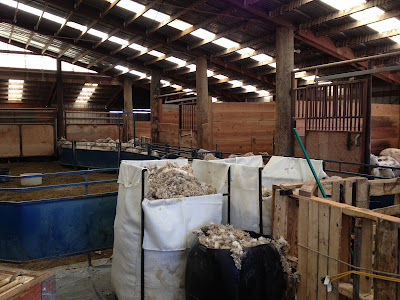Livestock Guardian Dogs and Barking

Barking is a language for dogs. It is always done with a reason and a purpose. Not all barking is the same, and once you begin to understand your dog more, you will note the variety of barks he or she possesses. I have 14 dogs here. I am tuned into my dogs. I can be sitting in the house, and if one barks outside, out of my sight, I can tell you who it is. I can identify all 14 of my dogs barks without having to see them to do that; when I had 25 dogs here, I could do the same. How you ask, could I possibly differentiate the barks of 25 dogs? By listening to my dogs and watching them, and learning their barks, that is how!
When a dog barks, they are not doing it to be annoying. The dog is communicating: with you, with their own kind, at a perceived threat, to express happiness or sadness or loneliness or out of frustration and stress. Learning those barks is an important part of being a good LGD owner.
One of the many complaints I read about and hear about with Livestock Guardian Dogs has to do with barking. Many LGD owners complain about their dog's barking. Many say it is excessive or bothering their neighbors. Many LGDs sadly, are dumped or abandoned or turned into rescues simply because they were barking, and their owners made no attempt to understand it.
The role of a LGD is to deter predators in a non-lethal manner from livestock. There are many ways this is accomplished. One is by leaving scent or sign by defecating and urinating around the perimeters of the dog's patrol area. Another way is by barking. By barking, the LGD ends a message to praetors to not come any closer, because this is their territory and they are protecting it. Some LGD breeds are more vocal and prone to barking than others. But, a person should always know that within each breed exist exceptions to every rule. Some Great Pyrenees are barkers and some are not; likewise with other LGD breeds that are deemed less vocal, you will find individuals who are inclined to bark more than what is considered the norm for the breed.
I would like to briefly share part of a story from a customer. She has four LGDs from me. The other day, she asked for help regarding the barking two of her dogs were engaging in. They had begun a habit of standing at a back fence line on the very large farm, and barking off into the woods. The owner could not see anything, but she knew that herds of elk and deer often passed through that area. She also lives in a high large predator area, with bear, lion and coyote packs.
Her two LGDs seem obsessed with something "out there" and would stand for long periods of time barking at a high repetitive pitch. What ever it was out there was disturbing them.
This is what I told her to do.
I asked her to go out and put the dogs on a leash, and placing herself between the dogs and the unseen but perceived threat "out there" beyond the fence, to walk them along the perimeter. The important thing was to have her, the owner, between the dogs and the perceived threat.
In just one day, doing this drastically cut back on the dog's repetitive and non-stop barking. She was able to help them and give them peace of mind. Why did it work? Because she showed her dogs that she was involved in their dilemma and taking active action to help them. By showing her LGDs she was part of the guardian team, it put their concerns at ease. They were still vigilant, but they relaxed realizing their owner was not only aware of their guard barking, she responded to it, and showed them she too was concerned and cognizant of what concerned her dogs. By putting herself between them and the perceived threat, she eased their minds. By this simple act, she showed her dogs their guard barking was not in vain. She showed them she was engaged and that they were not alone in this. The dogs now have drastically reduced their incessant barking at the fence line. They are still vigilant, and do their jobs, but they are no longer stressed or hyper concerned and needlessly worried.
Your guardian dog needs to know that YOU know what they are doing; they need to know you recognize what they are telling you and acting on it. The simple act of participating in the perimeter patrol was all it took to show these two guardians that their owner was backing them up, paying attention, and vigilant to their concerns.
Meanwhile, I suggest those of you who are experiencing a similar issue with your LGDs try what my customer did, and see if it can help you calm your dogs as well. Do not punish your dog for doing its job. Never resort to using harsh and painful artificial methods such as shock collars, E-collars, ridiculous 'yokes' or muzzles. They will only hurt and confuse your dog further. Take the initiative to help them out by being engaged and participating.























